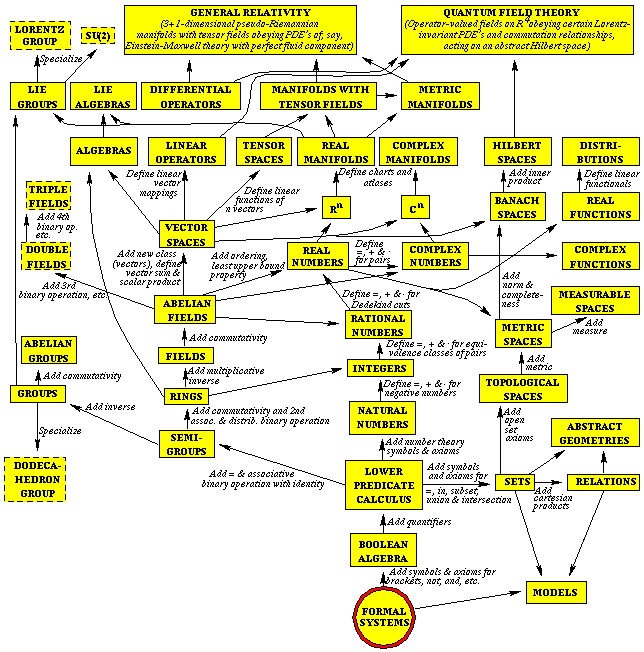Our Infinite Universe
How contemplation of an infinitely-large universe gives us a chance to use the word “Semidoppelganger”
For this section, I’m relying on a really fascinating article by Max Tegmark in Scientific American, in which he describes the different ways that modern theories of physics imply the existence of parallel universes. Why are we interested? Well, the first type of “parallel” universe Dr. Tegmark walks us through is deceptively simple — it’s simply our own universe, assuming our universe is infinite. So let’s consider the interesting consequences of our universe being infinite. (Actually, let’s rehash Dr. Tegmark’s consideration of an infinite universe, with slightly less math and slightly more smartass comments.)
What if the universe is really really big? Like, a lot bigger than what we can see? Well, let’s think about how far out we can see in our universe. The farthest out we can see is determined by how far light has traveled since the universe began – this so-called “Hubble Volume” is the bubble of space from which light has reached earth. For anything out beyond the Hubble volume, the light hasn’t reached us yet, so we won’t know what (if anything) is out there until the light gets here. Personally, I’ve always had the vague idea that our Hubble Volume essentially is the entire universe, but the truth is we really don’t know. Could it be filled with more stars? Nothingness? Muppets? We just have to wait and see. The Hubble Volume is currently about 4×1026 m across, and grows by one light-year in radius every year. (Incidentally, why has no one called the Hubble Volume the “Hubble Bubble”? That’s a missed marketing opportunity if I ever saw one.) So what does the universe look like beyond the Hubble Volume? We have no idea if it stops 3 feet past where we can see, or if it keeps on going for billions of parsecs beyond. I get the vague feeling that most physicists believe the universe is finite, but the size is unknown, and an infinite universe hasn’t been ruled out1.

Strictly speaking, this has nothing to do with the article. It's from Tegmark's website and I just think it's cool.
Let’s imagine that the universe goes on for infinity, looking pretty much like it does to us in our Hubble Bubble — more stars, galaxies, planets, etc. continuing on for unimaginable distances. In this scenario, the universe goes on for so long, that coincidences are bound to happen – there are bound to be other solar systems with planets that look eerily like Earth, if you travel far enough. Yes, the chances are slim that another Earth could form independently, but the likelihood isn’t zero. And if the likelihood isn’t zero, then it must happen somewhere in an infinite universe. If the universe is infinite, there’s another you out there! In fact, infinite yous out there.
Simply by working out the math, Tegmark estimates that your nearest identical copy is 10^10^28 meters away. (That’s 10 to the power of 10 to the power of 28. We are now past the limits of website font superscript capabilities.) The nearest identical copy of our observable universe (an exact duplicate of our entire Hubble Volume) should be about 10^10^118 meters away. These look like a nice tidy number, but that’s a helluva long distance away. This is far larger than a googol, 10^100, which in turn is far larger than the estimated number of protons in the observable universe (about 10^80). In fact we’re now entering the realm of large numbers like the googolplex, or 10^googol, which is so gigantic that it’s hard for our human brains to even get a grasp on it. To give you a feel for how large these numbers are, consider this — a googol can easily be written out longhand (just 1 followed by 100 zeros), and is already gigantic (see that proton fact above). If you tried to write out a googolplex, 1 followed by a googol zeros, the piece of paper you wrote it on would not fit inside our Hubble Volume. So your identical twin is quite a long distance away.
How the hell could Tegmark possibly figure this out? These are not precise calculations, of course, but are rough order-of-magnitude estimate. Here’s how he did it: picture all of our Hubble Volume filled with subatomic particles, packed in as tightly as possible. How many are there? Turns out, about 10^118. So there are about 10^118 slots that a particle could fill in our Hubble Bubble. So any possible Hubble Volume can be made by just choosing whether each of those 10^118 slots contain a particle or not. That means there are only about 2^10^118 possible universes! So in an infinite space, you’re bound to repeat Hubble Volumes after a while. This is probably not exactly right – if you were to try to do this for realsies, you’d no doubt have to account for the fact that there’s more than one type of elementary particle (so each “slot” is not just filled / empty), and there’s more information to specify each particle than just position – for example momentum. But the point stands – if the universe is infinite or astronomically large, eventually it will start repeating itself, and you’ll come across another you.
And the doppelganger distances that Tegmark calculated are for the nearest perfectly identical doppelganger. There must be whole doppelgangs of similar but not identical “yous” that are a lot closer. Say, a dude who is 5% different than you – if we allow for some variation, then the chances of finding that variant are a lot better, and so they must be a lot closer. Not quite close enough to meet them at Starbucks, but still… I was going to try to work out how much closer a given semidoppelganger would be, using Tegmark’s approach described above, but I need to track down that notepad bigger than our Hubble Volume. So you’ll just have to wait. Not that it matters, as they’re astronomically unlikely to pop up in our own Hubble Volume, so by definition we’ll never get a chance to meet them — anything out of our Hubble Bubble is beyond our reach. If you tried to send a telegram to someone outside of the Hubble Volume, you’d quickly realize how slow the speed of light is on these vast distances — it would take far longer than the lifetime of the universe for your signal to make it to the version of you with less acne and no braces.
Tegmark considers this a form of a “parallel universe”, though technically they simply live very far away in our same universe. But do you thirst for weirder parallel universes? Fear not — he goes on to describe three more levels of infinite parallel universes that are even more mind-bending. Read his article for the scoop on what quantum mechanics adds to the parallel-universe party. Later on, I’ll revisit Tegmark’s Level 4 infinite universe, which is the strangest of all. But before that, let’s let our maternal sides blossom, and talk about Boltzmann Babies…
Footnotes:
1. Tegmark says the evidence is in favor of an infinite (or at least very very very large) universe, much larger than the radius of the observable universe. The Cosmic Microwave Background apparently suggests a flat geometry, which implies an infinite or extremely large radius to the universe.



 Follow Timeblimp on Twitter
Follow Timeblimp on Twitter